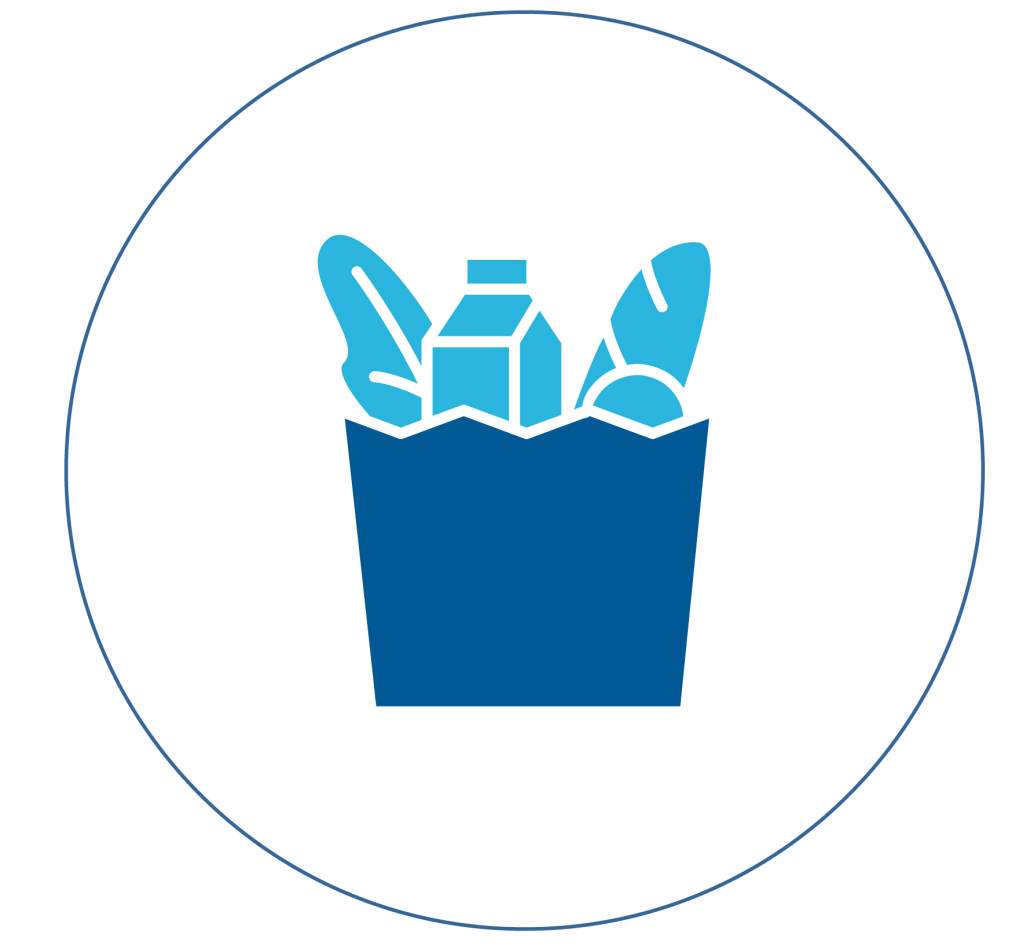
The 2025 government shutdown, now the longest unfunded shutdown (and on track to become the single longest) in US history, is expected to generate a more significant economic impact than we previously estimated. Most pressing is the fact that SNAP (Supplemental Nutrition Assistance Program) benefits are unlikely to be deployed in November. The US Department of Agriculture (USDA) issued a memo stating that the SNAP would not be issuing benefits on November 1st, asserting that “the well has run dry.”
Although SNAP benefits are distributed by states, they rely on federal funding and are classified as mandatory spending. Despite this classification, the USDA requires congressional appropriations to deploy these funds. The agency maintains $5 to $6 billion in contingency reserves, but officials indicate these cannot cover regular benefit payments.
SNAP provides monthly food assistance to ~40 million recipients, deploying approximately $8 billion monthly to low-income families and persons with disabilities. Recipients can use benefits to purchase groceries (but not prepared foods from restaurants). Beneficiaries typically receive payments within the first two weeks of the month, although some states deploy EBTs on a rolling basis throughout the month.
The $8 billion paid in monthly SNAP benefits represents around 10% of retail grocery sales, though the impact won’t be limited to groceries as households are more likely to substitute away from other retail categories to find cash to allocate to food spending. This represents a sizable risk that retail sales and broader consumption will slow in Q4 as a result.
Unpaid Federal workers are likely pulling back on their spending
Furloughed and essential federal workers were not paid ~$27 billion in income in October (this will most likely be back paid at a later date as current legislation guarantees backpay). Assuming these workers pared back discretionary spending in the absence of income, we could see a -0.2ppt drag on monthly consumption resulting from this income loss. This will show up in the October data and will likely weigh on November spending should the shutdown drag on.
Consumption will see a sizable drag in Q4 resulting from the shutdown
Combining the impact on consumption from federal employees in October and November and adding unpaid SNAP benefits into the mix, this could subtract up to -1.0 percentage points from Q4 GDP. Of course, there are potential spillover effects from weaker retail sales that this number does not capture including the reduced spending by workers in businesses in close proximity to government offices (e.g., restaurants, personal care services, etc. in and around the DC region) as well as business that rely on government contract payments to fund payrolls.
Bringing together the full extent of the shutdown impact, inclusive of the loss of Federal government spending, we estimate the drag on Q4 GDP growth could be as much as -3.0 percentage points if the shutdown extends through December.
The shutdown is contributing to a growing divide in the K-shaped economy
The K-shaped nature of the American economy is on a path to become more pronounced heading into 2026. Currently, the lower-income consumer is facing accumulating headwinds: prices creeping higher as tariff passthrough accelerates, wage growth and hours worked are moderating, and Affordable Care Act (ACA) enhanced tax credits are set expire. At the same time, delayed Federal paychecks and non-payment to government contractors will likely contribute to an uptick in delinquencies in Q4.
With various consumer segments of the US economy low on cash, we expect to see a rise in credit utilization through credits cards and personal loans and a greater reliance on By Now Pay Later (BNPL) services. A growing use of BNPL adds to data visibility challenges for economists, as we have limited data on who is using these services and what they are purchasing.
But as the bottom end of the K continues to weaken, high-income consumers are expected see supportive tailwinds in early 2026, including raised SALT deduction caps and income tax bracket adjustments. On top of that, the wealth effect is disproportionately benefiting higher income and older households – those who tend to have less exposure to debt are less burdened by high interest rates.
That upper end of the K will likely keep the aggregate consumer data afloat even if it masks weakness in consumer segments in the lower end of the K.
Bottom line: We are in uncharted territory as we approach the longest government shutdown ever in US history. This is shaping up to have one of the largest impacts on the economy we have seen. We are increasingly concerned that the economic impact of this full shutdown will become non-linear, meaning the negative impacts on the economy are at risk of growing and spillover effects are spreading. The reality is that we expect to see an increasingly bifurcated economy as we head into 2026.
About the Authors
Mike Reid is a Senior U.S. Economist at RBC. He is responsible for generating RBC’s U.S. economic outlook, providing commentary on macro indicators, and producing written analysis around the economic backdrop.
Carrie Freestone is an economist and a member of the macroeconomic analysis group. She is responsible for examining key economic trends including consumer spending, labour markets, GDP, and inflation.
Imri Haggin is an economist at RBC Capital Markets, where he focuses on thematic research. His prior work has centered on consumer credit dynamics and treasury modeling, with an emphasis on leveraging data to understand behavior.
This article is intended as general information only and is not to be relied upon as constituting legal, financial or other professional advice. The reader is solely liable for any use of the information contained in this document and Royal Bank of Canada (“RBC”) nor any of its affiliates nor any of their respective directors, officers, employees or agents shall be held responsible for any direct or indirect damages arising from the use of this document by the reader. A professional advisor should be consulted regarding your specific situation. Information presented is believed to be factual and up-to-date but we do not guarantee its accuracy and it should not be regarded as a complete analysis of the subjects discussed. All expressions of opinion reflect the judgment of the authors as of the date of publication and are subject to change. No endorsement of any third parties or their advice, opinions, information, products or services is expressly given or implied by Royal Bank of Canada or any of its affiliates.
This document may contain forward-looking statements within the meaning of certain securities laws, which are subject to RBC’s caution regarding forward-looking statements. ESG (including climate) metrics, data and other information contained on this website are or may be based on assumptions, estimates and judgements. For cautionary statements relating to the information on this website, refer to the “Caution regarding forward-looking statements” and the “Important notice regarding this document” sections in our latest climate report or sustainability report, available at: https://www.rbc.com/community-social-impact/reporting-performance/index.html. Except as required by law, none of RBC nor any of its affiliates undertake to update any information in this document.


